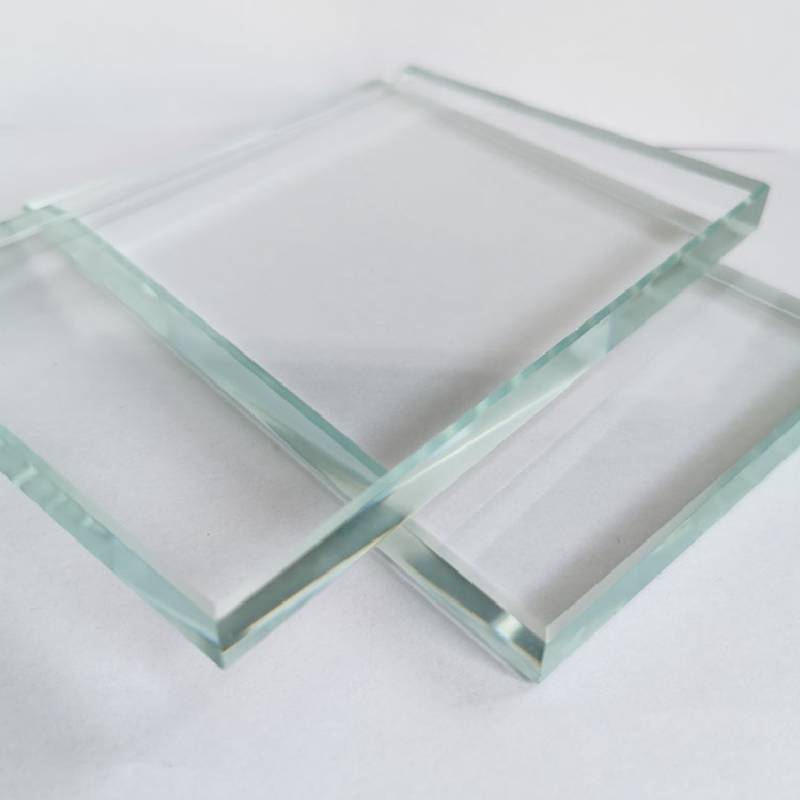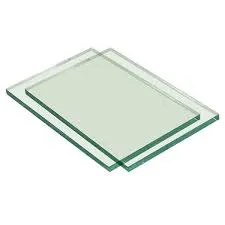The float glass process, a marvel of modern industrial technology, revolutionizes the way glass is produced, offering exceptional clarity and quality for a wide array of applications. As an industry expert with years of experience and insight, discussing the intricacies of this process provides an invaluable understanding that enhances credibility and authority in the glass production domain.

Historically, three key elements underpin the float glass process precision, control, and innovation. It begins with raw materials—silica sand, soda ash, and limestone—carefully mixed to create a batch. These materials are melted in a furnace at temperatures soaring above 1700°C, forming a molten glass mixture.
Once ready, the molten glass is fed from the furnace onto a bath of molten tin within a controlled-atmosphere chamber. Here lies the first major innovation leveraging the high density and non-reactive properties of tin allows the molten glass to float, ensuring a perfectly flat surface. This breakthrough in technology negates the need for mechanical smoothing, providing an economical and efficient production method.

The glass layer is precisely controlled for thickness, ranging from ultra-thin sheets to robust, thicker panes suitable for structural applications. This aspect of the process illustrates the expertise in managing variables such as speed, temperature, and viscosity. Skilled technicians monitor these conditions meticulously to ensure the highest quality output, embodying true craftsmanship in modern manufacturing.
As the glass floats along the tin bath, it enters an annealing lehr. This critical stage gradually cools the glass to relieve internal stresses, enhancing its strength and durability. The glass is then cut and polished, ready for distribution and use across diverse sectors—from construction and automotive industries to high-tech applications like photovoltaic panels and smart glass technologies.
float glass process
In the context of product experience, the float glass process delivers glass with unmatched optical clarity and minimal distortion—a distinct advantage over traditional methods. Architects and designers favor float glass for its ability to create expansive, transparent facades that complement sleek, modern aesthetics.
Furthermore, the process has become synonymous with energy efficiency and sustainability, core components driving the market today. The precision of the float method allows for coating applications post-production, ensuring excellent thermal and acoustic properties. This proficiency not only meets but often exceeds the stringent building and environmental regulations faced by modern construction projects.
The float glass process epitomizes authority and trustworthiness in glass production due to its embodiment of technological advancement, consistency, and quality control. Manufacturers adhering to this method are well-respected within the industry, ensuring that the end-users receive a product synonymous with reliability and excellence.
In sum, the float glass process remains a cornerstone of modern glass manufacturing, combining traditional expert craftsmanship with cutting-edge technology. Its transformative impact across industries highlights not only the process's pivotal role but also its continual innovation and improvement. This deep knowledge base, alongside experienced application and adherence to the highest industry standards, defines the float glass domain as authoritative, trustworthy, and integral to today's glass production landscape.
 Afrikaans
Afrikaans  Albanian
Albanian  Amharic
Amharic  Arabic
Arabic  Armenian
Armenian  Azerbaijani
Azerbaijani  Basque
Basque  Belarusian
Belarusian  Bengali
Bengali  Bosnian
Bosnian  Bulgarian
Bulgarian  Catalan
Catalan  Cebuano
Cebuano  Corsican
Corsican  Croatian
Croatian  Czech
Czech  Danish
Danish  Dutch
Dutch  English
English  Esperanto
Esperanto  Estonian
Estonian  Finnish
Finnish  French
French  Frisian
Frisian  Galician
Galician  Georgian
Georgian  German
German  Greek
Greek  Gujarati
Gujarati  Haitian Creole
Haitian Creole  hausa
hausa  hawaiian
hawaiian  Hebrew
Hebrew  Hindi
Hindi  Miao
Miao  Hungarian
Hungarian  Icelandic
Icelandic  igbo
igbo  Indonesian
Indonesian  irish
irish  Italian
Italian  Japanese
Japanese  Javanese
Javanese  Kannada
Kannada  kazakh
kazakh  Khmer
Khmer  Rwandese
Rwandese  Korean
Korean  Kurdish
Kurdish  Kyrgyz
Kyrgyz  Lao
Lao  Latin
Latin  Latvian
Latvian  Lithuanian
Lithuanian  Luxembourgish
Luxembourgish  Macedonian
Macedonian  Malgashi
Malgashi  Malay
Malay  Malayalam
Malayalam  Maltese
Maltese  Maori
Maori  Marathi
Marathi  Mongolian
Mongolian  Myanmar
Myanmar  Nepali
Nepali  Norwegian
Norwegian  Norwegian
Norwegian  Occitan
Occitan  Pashto
Pashto  Persian
Persian  Polish
Polish  Portuguese
Portuguese  Punjabi
Punjabi  Romanian
Romanian  Russian
Russian  Samoan
Samoan  Scottish Gaelic
Scottish Gaelic  Serbian
Serbian  Sesotho
Sesotho  Shona
Shona  Sindhi
Sindhi  Sinhala
Sinhala  Slovak
Slovak  Slovenian
Slovenian  Somali
Somali  Spanish
Spanish  Sundanese
Sundanese  Swahili
Swahili  Swedish
Swedish  Tagalog
Tagalog  Tajik
Tajik  Tamil
Tamil  Tatar
Tatar  Telugu
Telugu  Thai
Thai  Turkish
Turkish  Turkmen
Turkmen  Ukrainian
Ukrainian  Urdu
Urdu  Uighur
Uighur  Uzbek
Uzbek  Vietnamese
Vietnamese  Welsh
Welsh  Bantu
Bantu  Yiddish
Yiddish  Yoruba
Yoruba  Zulu
Zulu 


